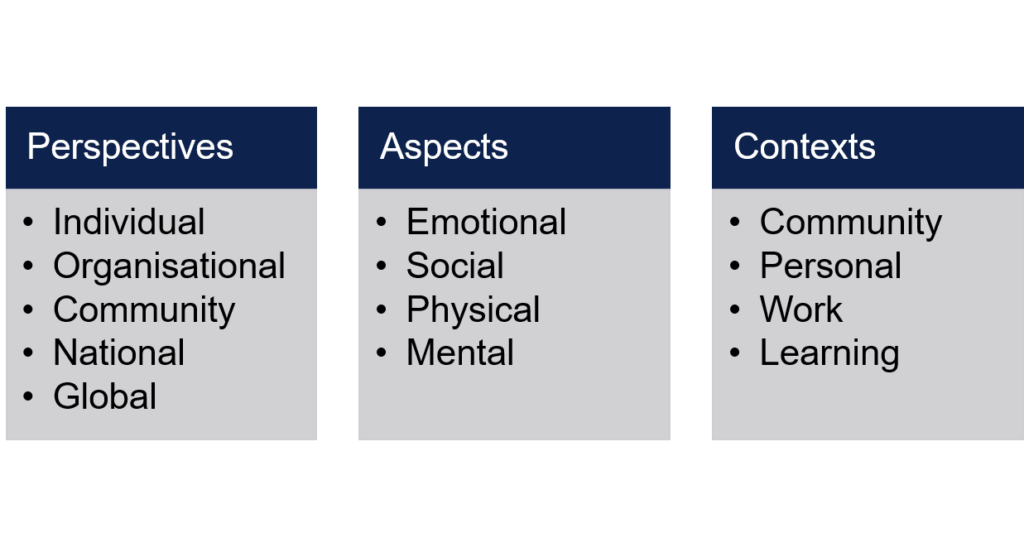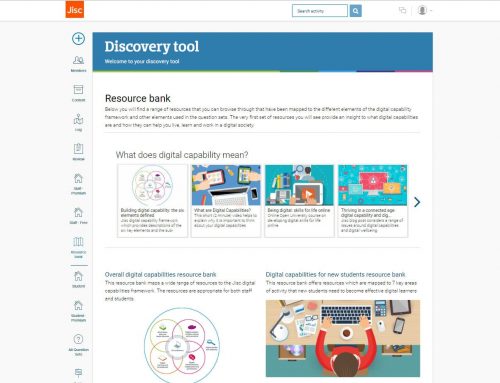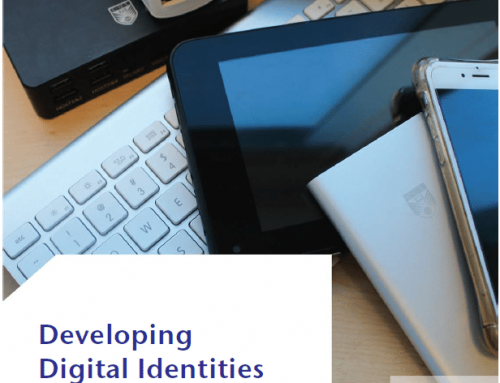One of my favourite jobs last year was carrying out a Jisc funded preliminary study on digital wellbeing. I worked with Heather Price and Alicja Shah from Jisc on this study.
The study looked at existing literature and definitions – see this library on Zotero if you are interested to see which reports, articles and resources were included.
The study was very timely as there has been a huge interest in student mental health over the last year (unfortunately as the result of a rise in student mental heath problems, including some suicides). Digital wellbeing is only one element of both mental and physical wellbeing and the study considered a range of contexts and perspectives.
We considered the original Jisc definition of digital wellbeing (developed by Helen Beetham as part of the work into digital capabilities in further and higher education) and have broadened it to include a societal and organisational context.
Digital wellbeing is a term used to describe the impact of technologies and digital services on people’s mental, physical, social and emotional health. It is a complex concept that can be viewed from a variety of perspectives and across different contexts and situations:
Individual perspective: personal, learning and work contexts: this involves identifying and understanding the positive benefits and any potential negative aspects of engaging with digital activities and being aware of ways to manage and control these to improve wellbeing
Societal or organisational perspective: providers of digital systems, services and content have a responsibility for ensuring that these are well managed, supported, accessible and equitable. They also need to empower and build capability in users so that all who engage with them are equipped to do so in a way that supports and/or improves their wellbeing
It was interesting adopting a few different lenses on digital wellbeing – considering it from a range of different perspectives, aspects and contexts. This acknowledges the complexity of an individual’s digital wellbeing and how far this can be affected by external factors, personal factors and the situations that they may find themselves in at different times.

In addition to producing a range of visual representations of digital wellbeing we produced two briefing papers for the post-16 education sector
- A briefing paper for practitioners is titled ‘digital wellbeing for you, your colleagues and students‘. In addition to a model and an exploration of the different aspects of digital wellbeing the briefing includes guidance on the positive actions individuals can take and some good practice principles to support the wellbeing of others
- A briefing paper for senior leaders outlines good practice principles to support the digital wellbeing of your students and staff. It explores the key issues and responsibilities and sets out eight good practice principles that organisations can adopt
Digital wellbeing is a critical element of staff and student mental and physical wellbeing and I really hope that the practical priciples and guidance offered in the two briefing papers will help educational institutions really focus on this issue.







Leave A Comment